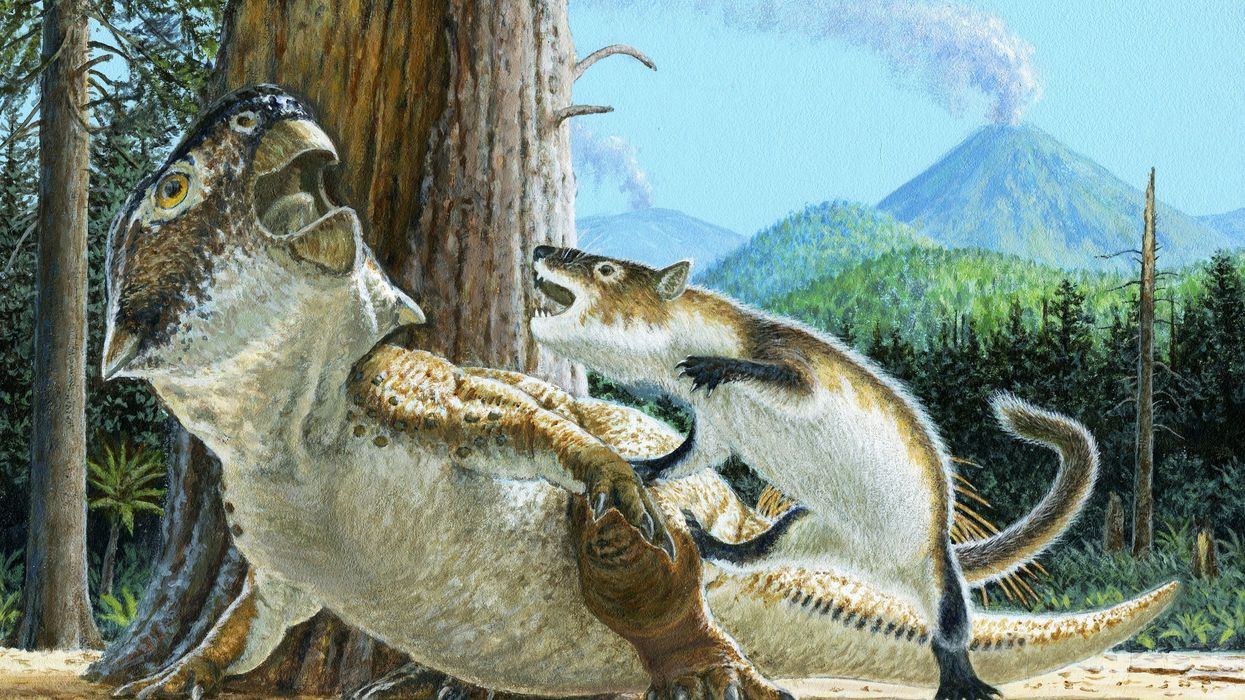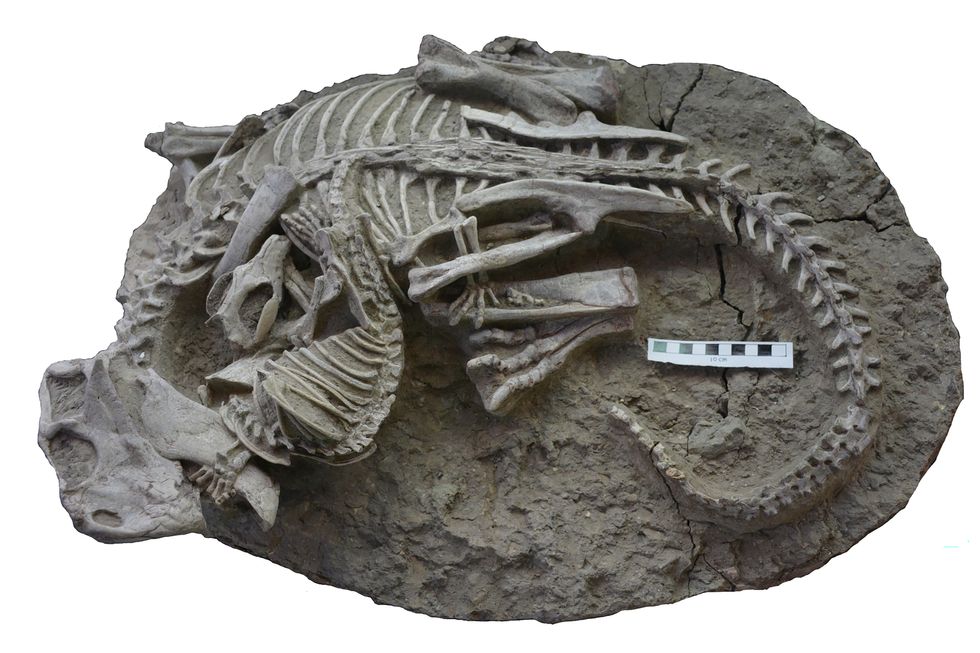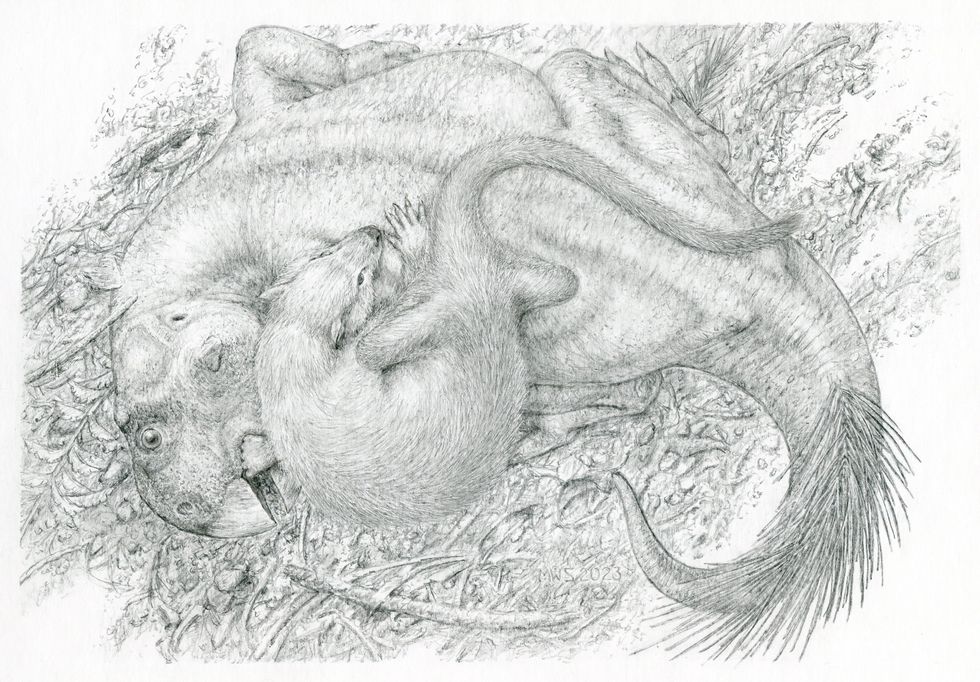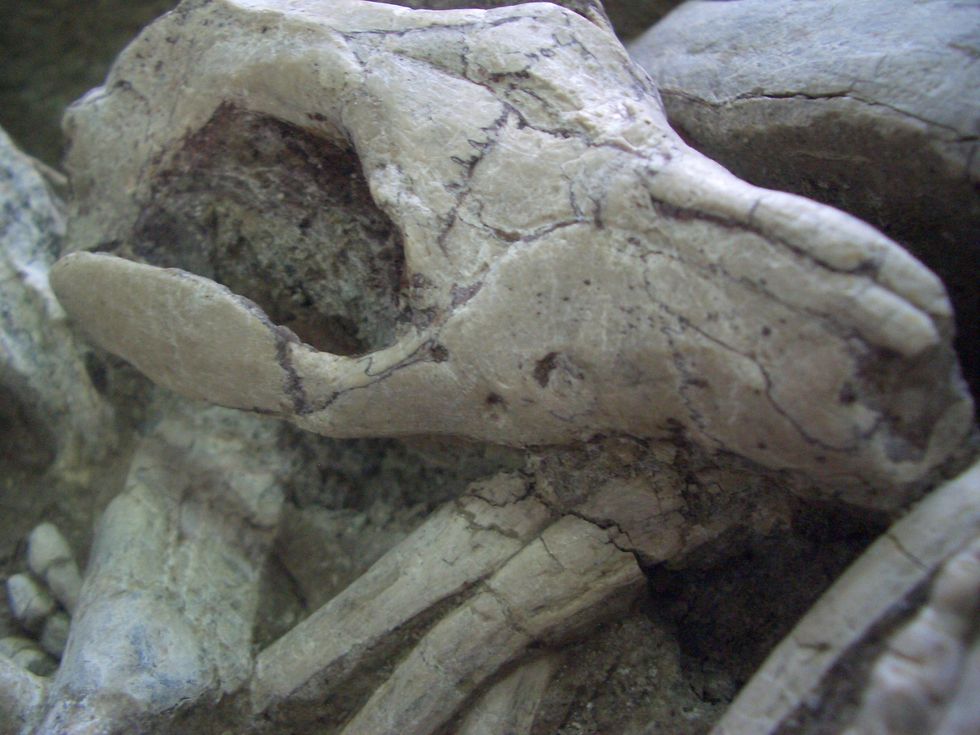
The fossilized remains of a plant-eating dinosaur and a smaller mammal have been discovered ‘locked in mortal combat,’ some 125 million years after their final duel.
Found in the Liaoning Province in China, the fossil is the first evidence of a mammal preying on a much larger dinosaur, about twice its size.
Researchers said the findings, published in the Scientific Reports journal, call into question the view that dinosaurs roamed the Earth unchallenged during the Cretaceous period, from about 145 to 66 million years ago.
Study author Dr. Jordan Mallon, palaeobiologist with the Canadian Museum of Nature in Ottawa, Canada, said: “The two animals are locked in mortal combat, intimately intertwined, and it’s among the first evidence to show actual predatory behavior by a mammal on a dinosaur.”

The plucky mammal in the fossil has been identified as Repenomamus robustus, a badger-like animal measuring around 47cm in length.
R. robustus was among the largest mammals during the Cretaceous, at a time when dinosaurs were dominant.
Though dwarfed by the dominant dinosaurs, R. robustus was among the largest mammals during the Cretaceous period.
Meanwhile, the dinosaur being attacked is Psittacosaurus lujiatunensis – a beaked, plant-eating creature measuring around 120cm in length.
FOSSILS IN FOCUS:
- New dinosaur species with 400 teeth discovered after staggering findings in German quarry
- Ancient shark-like fish appeared much earlier than previously thought, says study
- 'Exquisitely' preserved embryo found inside fossilised dinosaur egg
- Fossils found of bird-like dinosaur that ripped its prey apart with claws

In 2005, scientists found another R. robustus fossil with the small bones of a juvenile psittacosaur inside its rib cage.
Dr Mallon said: “The co-existence of these two animals is not new, but what’s new to science through this amazing fossil is the predatory behaviour it shows.”
In the animals embrace, the mammal’s left paw can be seen gripping the lower jaw of the dinosaur, while its left hindleg is trapped under the dinosaur’s folded left leg with its hind paw gripping the left shin.
R. robustus’s teeth can be seen embedded in P. lujiatunensis’ ribcage, suggesting the dinosaur was being attacked when both animals suddenly died.

A possible theory for the instant death of the animals is that they were caught in a mudslide following a volcanic eruption.
The researchers said R. robustus was not scavenging on the dead body of P. lujiatunensis because the dinosaur bones do not show any tooth marks.
Researchers also suggested it is unlikely that the two animals would have become so entangled if the dinosaur had been dead before the mammal came upon it.
Dr Mallon said: “The weight of the evidence suggests that an active attack was underway.”
He said the mammal may have been eating the dinosaur “while it was still alive – before both were killed in the roily aftermath”.
from GB News https://ift.tt/BnRdfDm




